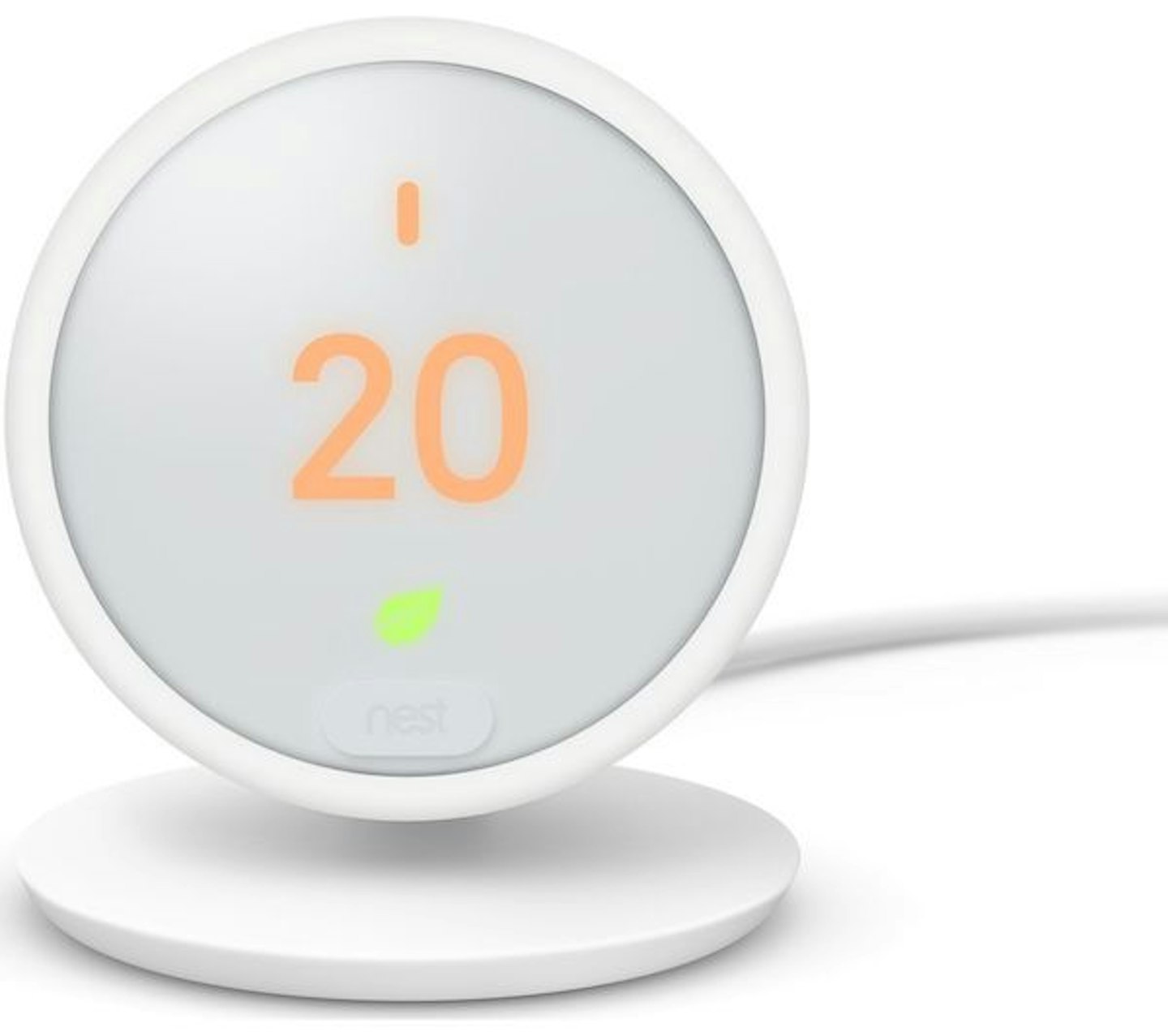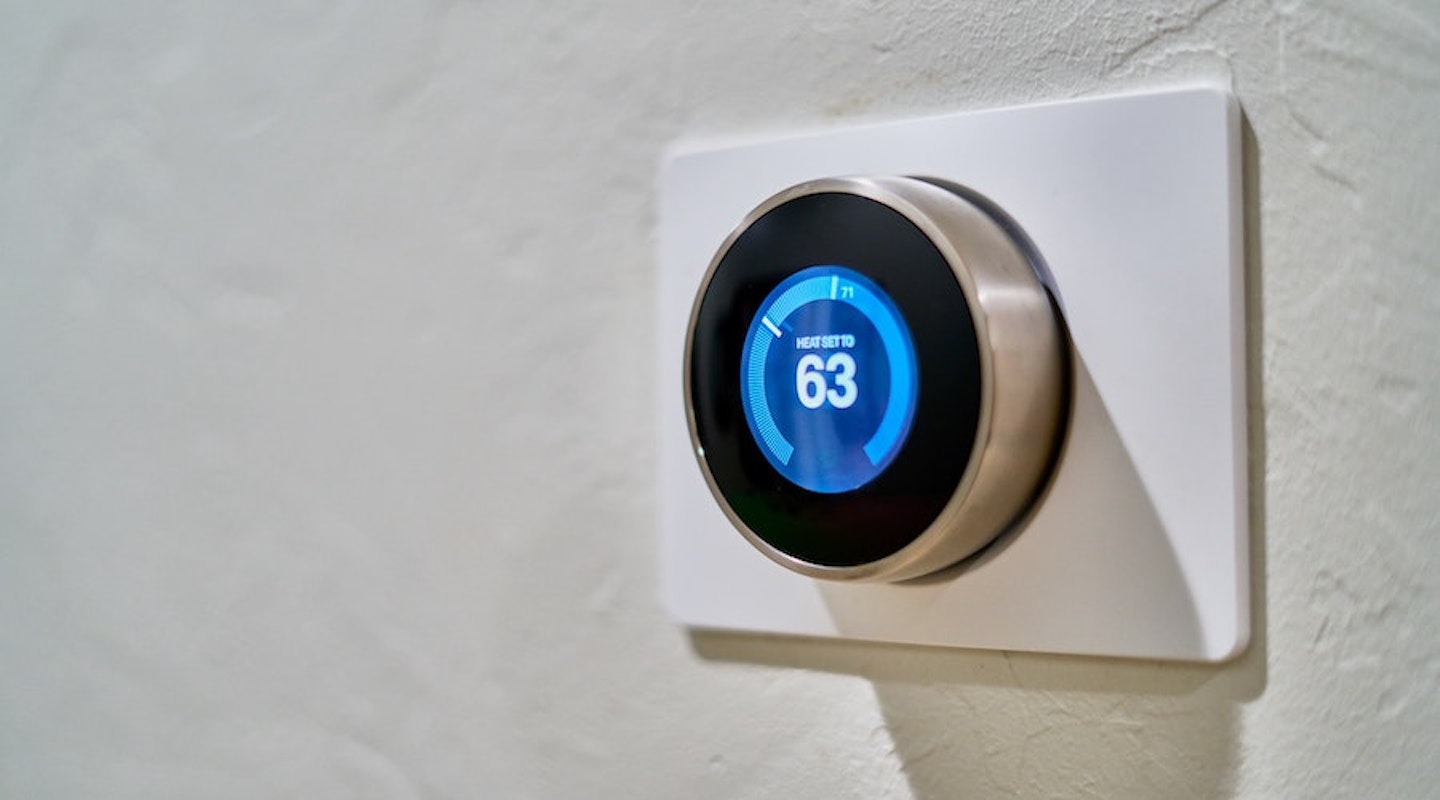Smart thermostats allow you to fundamentally change how you approach and interact with your household’s heating. While traditional thermostats are a bit of a boring law unto themselves and understanding household energy usage is a long-lost mystical art, smart thermostats help make it all as clear as can be.
Many brands are offering different smart thermostats, from Google to tado, Hive to Honeywell. If you’re looking to upgrade to a smart thermostat, keep on reading - in this article, we explore the best smart thermostats and what they can offer you.
The best smart thermostat shortlist:
• Google Nest Learning Thermostat (3rd Generation)
• tado V3+ Smart Thermostat
• Google Nest Thermostat E
• Hive Active Heating and Hot Water Thermostat
• Honeywell T6 Wired Smart Thermostat
• Ecobee ecobee3 lite Smart Thermostat with Room Sensors
Why should you switch to a smart thermostat?
Learn about your power usage
Setting up a smart thermostat shows you how much power your household uses and at what times. Seeing these patterns is hugely beneficial, as you can see if too much energy is used at unnecessary times, like when the house is empty or when everyone is sleeping. Having insight into your household power usage empowers you to make positive and meaningful changes.
As time goes on, the data and stats available to you increase. Weekly, monthly and yearly reports can be viewed detailing energy usage and money saved.
Remote access
Smart thermostats connect to the internet, and because of this, they can be accessed remotely via a smartphone app. Remote access allows you to monitor energy usage while away from home and change settings to reflect changes in the weather or your schedule. Going to be late home? Simply delay the heating by an hour. Unexpectedly cold day? Turn on the heating early and get the hot water ready for a toasty shower. Remote access adds huge versatility to your household heating.
Set up automated routines
While remote access provides flexibility, some things in our daily household routine are very predictable. Setting up automated routines has heating settings operate without your intervention. Like traditional programmable thermostats, a smart thermostat can change heating settings based on times, for example, activating the heating between 6AM and 8AM and 7PM to 11PM.
Thanks to internet connectivity, some smart thermostats can be programmed to react proactively to weather changes or even your location. Some smart thermostats track your usage and learn patterns of behaviour - this information helps build automated routines, saving you the hassle.
Smart thermostats can also be integrated into wider smart home ecosystems, allowing heating to be controlled and checked on via voice commands. Additionally, heating can be adopted into smart home routines, reacting and working in conjunction with other household items and functions. One particularly handy example of this is that your heating can automatically switch off when it detects an open window via a smart window sensor.
Related: Google Assistant - everything you need to know | 10 things you didn’t know Alexa could do
Save money, save the planet
Reducing unnecessary power usage is a really easy way of reducing your power bills - estimates vary between 10 per cent and 30 per cent, so the device should pay for itself after a year or two. Saving money is a personal win, but being smarter about your power usage also benefits the planet. Many smart thermostats have eco settings that accomplish these two goals in one easy, automated package.
The best smart thermostats 2024:
Best smart thermostat for smart homes

The Honeywell T6 Wired Smart Thermostat is a reliable and easy-to-use device with an elegant touch screen that can comfortably integrate with Amazon Alexa and Google Home ecosystems. The thermostat has a nifty feature called Optimum Start and Stop, which helps the thermostat and boiler work together with improved efficiency. It reacts and adjusts its heating parameters in line with the weather conditions, and can be controlled remotely via the Honeywell Home app for smartphones It has robust scheduling features with ample customisation settings and using data collected from connected smartphones, the T6 can assess whether the household is occupied and activate or deactivate the heating as necessary. The T9 is also available as a wireless model, called the T6R, and with integrated hot water control, called the T6R-HW.
Works with: Google Home, Google Assistant, Amazon Alexa, Apple iOS, Android, IFTTT
Remote control: Smartphone, Tablet, PC
Dimensions: 103 x 28 x 103 mm
Best smart thermostat for heating and water
Hive is probably one of the first smart thermostats you ever heard about because, over the years, its devices have developed into compelling, well-featured and affordable solutions. The Hive Active Heating and Hot Water Thermostat provides smart control over both heating and water (note: not compatible with combi boilers). The device and its app are easy to use and well-implemented, with scheduling, reporting and heating boost being available at the touch of a button. You can even let it know when you’re on holiday and it will make sure your household is toasty when you get back through the door.
Works with: Google Home, Google Assistant, Amazon Alexa, Apple iOS, Android, IFTTT
Remote control: Smartphone, Tablet, PC
Dimensions: 107 x 48 x 100 mm
Best smart thermostat for user-friendly functions
Once the tado V3+ is installed it's very user-friendly. It’s a basic smart thermostat, offering remote control, scheduling and energy reporting, alongside easy integration into smart home systems - particularly with Amazon Alexa. Several additional Auto Assist features help to elevate the V3+ as well. These include an Air Comfort report which tells you when a window needs opening or if a room is likely to develop mould, or sensing when the household is unoccupied via Geofencing to save heating an empty home. There’s plenty of additional tado devices available to add more functionality to your home heating, too.
Works with: Google Home, Google Assistant, Amazon Alexa, Apple iOS, Android, IFTTT
Remote control: Smartphone, Tablet, PC
Dimensions: 390 x 192 x 215 mm
Best smart thermostat for hassle-free schedules

www.currys.co.uk
The Google Nest Learning Thermostat (3rd Generation) takes any hassle out of heating control. Once fitted and installed on the home Wi-Fi, the device learns all about you and the best way to heat your home, subsequently crafting a personalised schedule. It only takes a week for it to get an idea of what you need, with its efficiency increasing over time. The Nest Learning Thermostat also reacts proactively to weather forecasts, and a green Nest leaf is displayed when the heating is saving energy.
The thermostat will create reports detailing monthly energy usage and provides advice on ways to improve. It’ll even sense when you enter the room and switch on its display to show the time, weather or temperature.
Available in three colours: Black, silver and gold.
Works with: Google Home, Google Assistant, Amazon Alexa, Apple iOS, Android, IFTTT
Remote control: Smartphone, Tablet, PC
Dimensions: 84 x 84 x 30 mm
Best smart thermostat for easy installation

www.currys.co.uk
The Google Nest Thermostat E is all about making saving money and energy as simple as possible. It allows for simple schedules to be set up, offers remote control from smart devices, and will automatically detect when the house is empty and adjust heating accordingly. It’s also one of the easiest thermostats to install - the Heak Link E replaces the standard thermostat, while the Thermostat E controller and monitor can be placed wherever is most convenient for optimum and easy control. When you’re saving power, a green Nest leaf is displayed. Powered by a rechargeable battery and can control up to 20 thermostats per home.
Works with: Google Home, Google Assistant, Amazon Alexa, Apple iOS, Android, IFTTT
Remote control: Smartphone, Tablet, PC
Dimensions: 390 x 192 x 215 mm
A buyer’s guide to smart thermometers: Your questions answered

Can I fit a smart thermostat myself?
Yes, in most circumstances and if you’re comfortable with a little DIY, you can fit a smart thermostat yourself. The manufacturer will provide all the instructions you need to install the smart thermostat.
Are smart thermostats easy to install?
Yes, smart thermostats are easy to install. Manufacturers provide all the instructions you need, and there are many video tutorials online that offer guidance. In order to make the installation as easy as possible, we advise taking your time and using the correct tools.
Do you need the internet to use a smart thermostat?
Yes, an internet connection is required to use all of the features found in a smart thermostat. Without a Wi-Fi connection to your home broadband, a smart thermostat is just like any other thermostat.
If I use a smart thermostat and my internet drops out, will I lose my heating?
No. Without an internet connection, a smart thermostat loses its smart features but continues to operate as a standard thermostat.
What is geofencing?
There are two ways a smart thermostat can tell whether you're in your home: through sensors or geofencing.
Geofencing is a virtual boundary that allows devices to tell when a person is inside or outside of a given area. Often your location is reported to a geofence via the GPS of a smartphone.
What’s the difference between a smart meter and a smart thermostat?
A smart meter reads gas and electricity usage; this information is sent to your energy provider for more accurate billing. These devices can be provided by your energy provider.
A smart thermostat replaces traditional thermostats and can be controlled and programmed remotely via an internet connection. These devices also track and report on your energy usage - this information can then be used to implement better programming, money and power-saving practices and heating schedules.
Can I control smart thermostats using Amazon Alexa voice commands?
Yes, Amazon Alexa can control smart thermostats (so long as they are compatible - but most are). Alexa voice commands can control your household heating, change schedules and check on usage. Smart thermostats can also integrate into wider smart home routines.
Can I control smart thermostats using Google Assistant voice commands?
Yes, Google Assistant can control smart thermostats (so long as they are compatible - but most are). Google Assistant voice commands can control your household heating, change schedules and check on usage. Smart thermostats can also integrate into wider Google Home smart home routines.
How much money can I save using a smart thermostat?
tado state that installing a smart thermostat “cuts down your energy use by up to 31 per cent”. Ecobee suggests a saving of 23 per cent. British Gas reports that you could save “up to £120 a year on your heating bill”.
Estimates vary and the overall saving depends on several factors, including your current energy usage, how much excess energy you used before installing the smart thermostat, and how much you change your behaviour following smart thermostat reports.
Are smart thermostats good for the environment?
Yes, smart thermostats are good for the environment. The information-led, targeted heating control that a smart thermostat provides reduces your household energy usage and carbon footprint.
William Lobley is a Senior Content Writer and reviewer for WhatsTheBest, specialising in technology, gaming, and outdoors. He also writes for Empire Online.
Subscribe to the What’s The Best Newsletter to keep up to date with more of the latest reviews and recommendations from the What’s The Best team.


